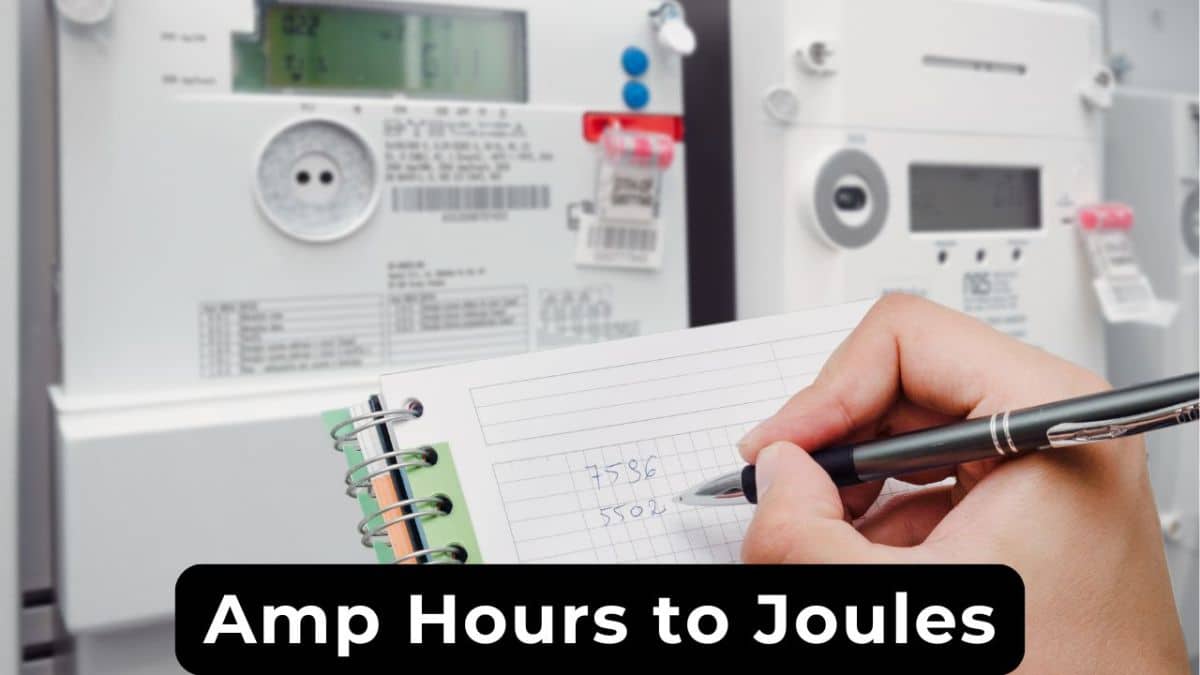Amp Hours to Joules Converter
Calculate energy (Joules) from amp hours (Ah) and voltage (V).

Amp Hours (Ah) to Joules (J) Conversion
To convert amp hours (Ah) to joules (J), you need to consider the voltage (V) of the system. The energy stored in a battery is calculated using the following formula:
Conversion Formula ⚡
The formula becomes:
E(J) = Q(Ah) × V(V) × 3600Where:
- E(J) = Energy in joules (J)
- Q(Ah) = Charge in amp hours (Ah)
- V(V) = Voltage in volts (V)
- 3600 = Conversion factor (1 hour = 3600 seconds)
Key Insight:
This formula is essential for calculating the energy capacity of batteries based on their charge and voltage.
💡 Understanding Joules
Joules are a unit of energy. It quantifies the amount of work done when a force of one newton is applied over a distance of one meter.
- 1 Joule = 1 Watt × 1 Second
- Commonly used in physics and engineering
- Essential for understanding energy consumption and storage
Amp Hours (Ah) to Joules (J) Conversion
Formula: E(J) = Q(Ah) × V(V) × 3600
Results:
Example Values
| Amp Hours [Ah] | Voltage [V] | Energy [J] |
|---|---|---|
| 1 Ah | 1 V | 3600 J |
| 2 Ah | 1 V | 7200 J |
| 1 Ah | 2 V | 7200 J |
| 2 Ah | 2 V | 14400 J |
Ampere-Hour to Joules Conversion FAQs
To convert from Ampere-Hours to Joules, use the formula:
Where:
- E(J) = Energy in joules (J)
- Q(Ah) = Charge in ampere-hours (Ah)
- V(V) = Voltage in volts (V)
This formula accounts for the conversion of hours to seconds by multiplying by 3600.
This conversion is useful when you need to determine the energy stored in a battery or capacitor based on its capacity in ampere-hours and the voltage at which it operates.
Common energy values can be expressed in Joules (J) and watt-hours (Wh). For example:
- A “1Ah” battery at “12V” would store:
This notation is commonly used in battery specifications and energy calculations.
